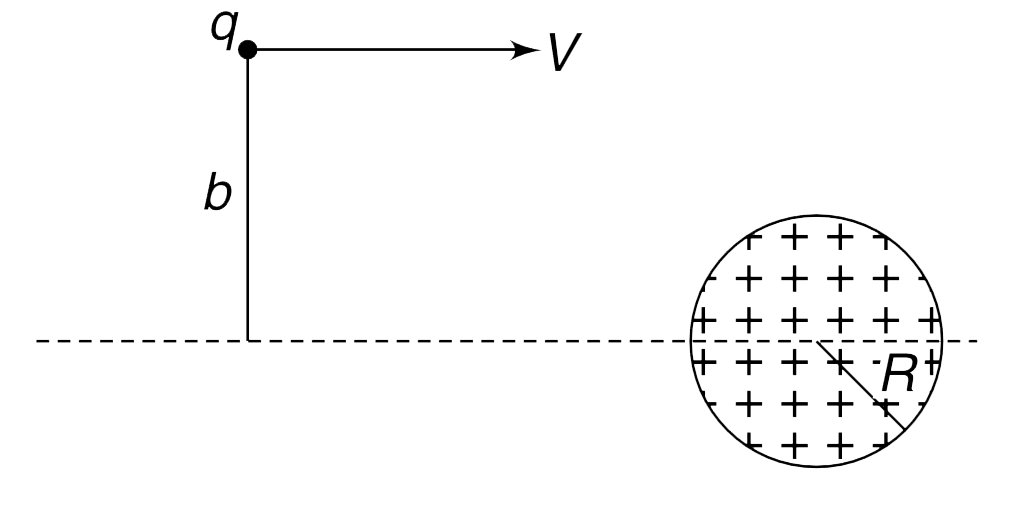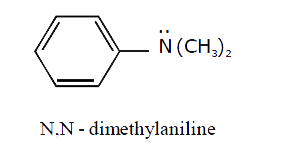Bromine particles are almost twice as heavy as chlorine particles. Which gas will diffuse faster , bromine (vapour) or chlorine ? Explain your answer.
The correct Answer is:Chlorine will diffuse faster than bromine vapour. This is because light molecules diffuse faster than heavy molecules
Step by step video, text & image solution for Bromine particles are almost twice as heavy as chlorine particles. Which gas will diffuse faster , bromine (vapour) or chlorine ? Explain your answer. by Chemistry experts to help you in doubts & scoring excellent marks in Class 9 exams.
Updated on:21/07/2023Topper's Solved these Questions
- MATTER IN OUR SURROUNDINGS BOOK - LAKHMIR SINGH & MANJIT KAURCHAPTER - MATTER IN OUR SURROUNDINGS EXERCISE - VERY SHORT ANSWER TYPE QUESTIONS
6 Videos
- MATTER IN OUR SURROUNDINGS BOOK - LAKHMIR SINGH & MANJIT KAURCHAPTER - MATTER IN OUR SURROUNDINGS EXERCISE - SHORT ANSWER TYPE QUESTIONS
13 Videos
- IS MATTER AROUND US PURE BOOK - LAKHMIR SINGH & MANJIT KAURCHAPTER - IS MATTER AROUND US PURE EXERCISE - NCERT BOOK PAGE 24
1 Videos
- MODEL TEST PAPER 1BOOK - LAKHMIR SINGH & MANJIT KAURCHAPTER - MODEL TEST PAPER 1EXERCISE - SECTION B
3 Videos
Similar Questions
Knowledge Check
The number of which subtomic particle is same is case of chlorine atoms and chloride in ?
AElectronBProtonCNeutronsDAll of the aboveThe number of which subatomic particle is same in case of chlorine atom and chloride ion?
AElectronBProtonCNeutronsDAll of the aboveAt ordinary temperature and pressure, chlorine is because a gas, bromine is a liquid and iodine is a solid because
AAmong them chlorine is the lightest and iodine is the heaviestBchlorine has lowest specific heatCchlorine molecule is least stableDintermolecular forces are the weakest in chlorine and strongest in iodine
A particle with positive charge Q is held fixed at the origen. A second particle with positive charge q is fired at the first paricle, which follows the trajectory as shown in fig.

(a) Is the angular momentum of the second particular momentum of the second particle constant about some axis? Why or why not? Give reason to support your answer.
(b) Does the Coulomb force that one charge exerts on other charges changes if the other charges are brought nearby?(yes/No)
View SolutionThere is a fixed sphere of radius R having positive charge Q uniformly spread in its volume. A small particle having mass m and negative charge (–q) moves with speed V when it is far away from the sphere. The impact parameter (i.e., distance between the centre of the sphere and line of initial velocity of the particle) is b. As the particle passes by the sphere, its path gets deflected due to electrostatics interaction with the sphere.
(a) Assuming that the charge on the particle does not cause any effect on distribution of charge on the sphere, calculate the minimum impact parameter b0 that allows the particle to miss the sphere. Write the value of b0 in term of R for the case
12mV2=100.(kQqR)
(b) Now assume that the positively charged sphere moves with speed V through a space which is filled with small particles of mass m and charge – q. The small particles are at rest and their number density is n [i.e., number of particles per unit volume of space is n].
The particles hit the sphere and stick to it. Calculate the rate at which the sphere starts losing its positive charge dQdt. Express your answer in terms of b0

View SolutionA sodium salt (A) is heated with cone. Sulphuric acid. The evolved gas truns moist litmus paper red and producess white fumes in contact with a glass rod moistened with ammonia solution. It also gives white precipitate when passed through AgNO3 solution. When the salt is heated with MnO2 and cone. H2SO4, a gas with an irritating smell is evolved which turns starch-iodide paper blue. Identify the salt and the gaseous product evolved from it. Explain your answer with relevant chemical equations.
View SolutionThe oxides of Cl, Br and I are well known. They have various composition. The oxides are thermally unstable and dangerously explosive. They react with alkali. The bromine oxides are thermally more stable than chlorine oxides. The structure of halogen oxides is explained on the basis of VSEPR theory.
The hydrides of chlorine, bromine and iodine can be made by direct synthesis an they are well strongly fuming become increasingly more powerful reducing agents. Halogens also form oxoacids of the form HOX,HXO2,HXO3 and HXO4 The acidic character of oxoacids and halogen oxides decreases from 'Cl' to 'I', however it increases with increase in oxidation number of halogen in them.
Which of the following does not dimerise?
View SolutionThe oxides of Cl, Br and I are well known. They have various composition. The oxides are thermally unstable and dangerously explosive. They react with alkali. The bromine oxides are thermally more stable than chlorine oxides. The structure of halogen oxides is explained on the basis of VSEPR theory.
The hydrides of chlorine, bromine and iodine can be made by direct synthesis an they are well strongly fuming become increasingly more powerful reducing agents. Halogens also form oxoacids of the form HOX,HXO2,HXO3 and HXO4 The acidic character of oxoacids and halogen oxides decreases from 'Cl' to 'I', however it increases with increase in oxidation number of halogen in them.
The structure of Cl2O7 is O3Cl−O−ClO3. The Cl−O−Cl bond angle is :
View Solution

